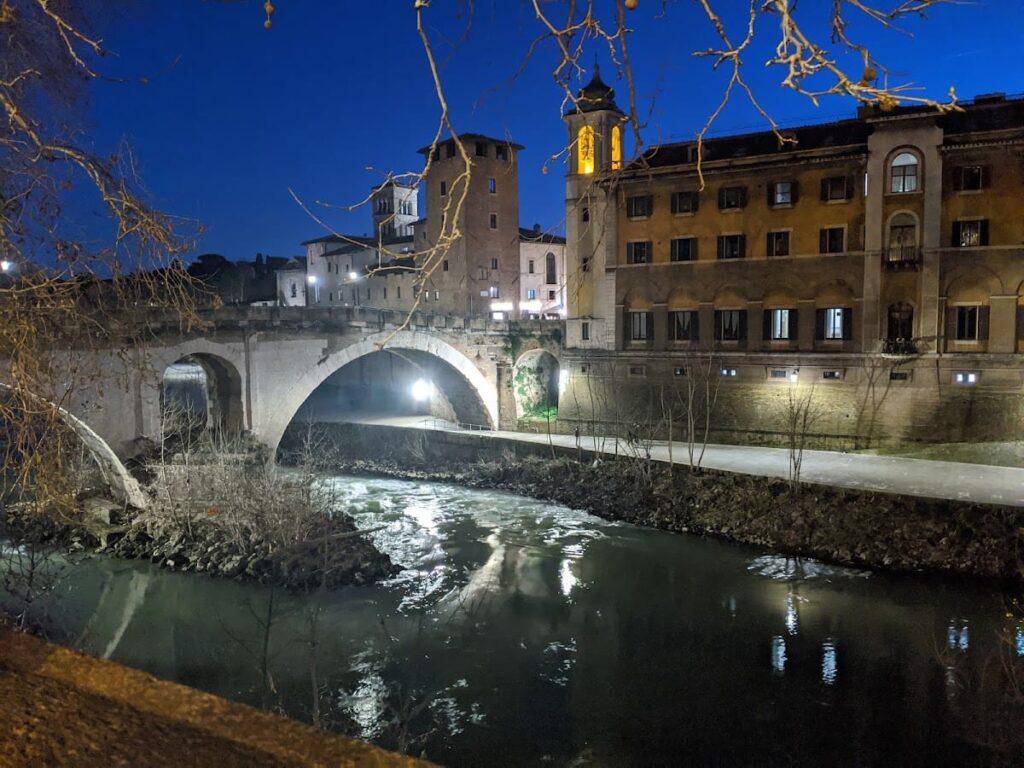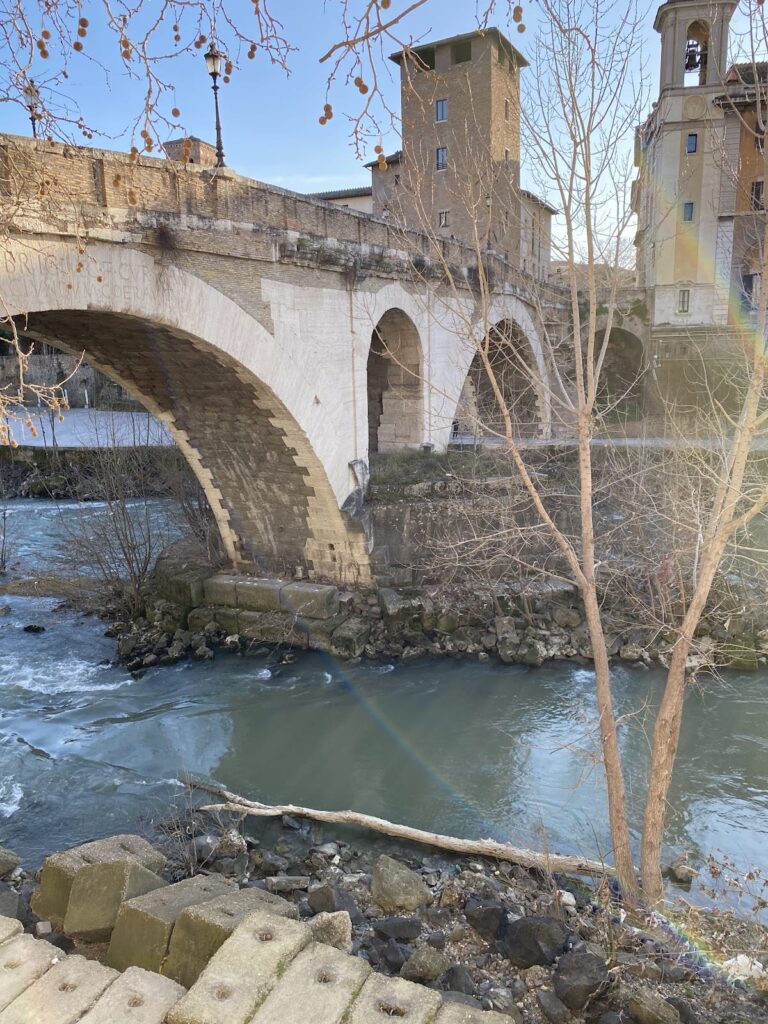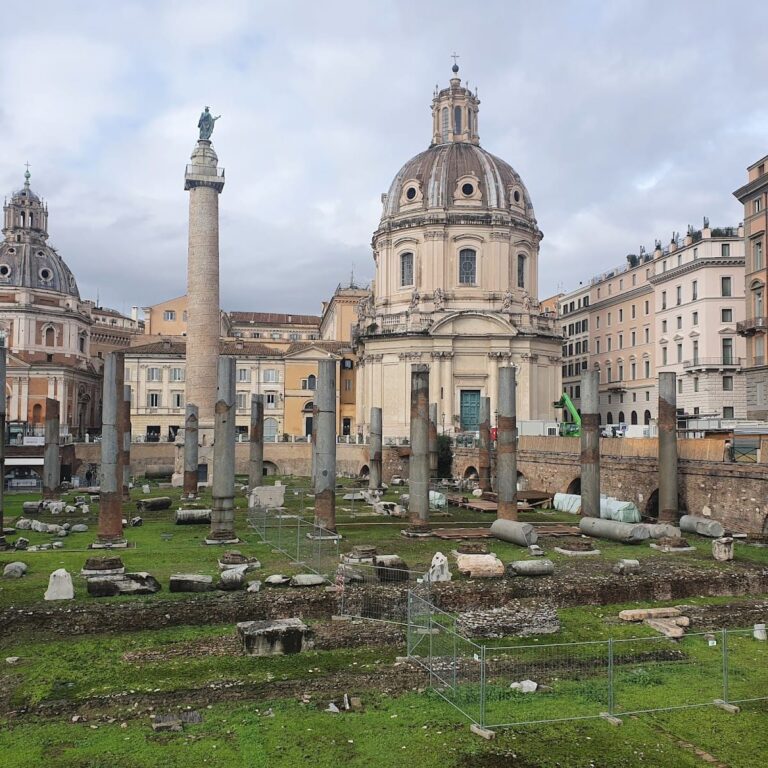Ponte Fabricio: Rome’s Ancient Bridge Connecting Tiber Island
Visitor Information
Google Rating: 4.6
Popularity: Medium
Google Maps: View on Google Maps
Country: Italy
Civilization: Roman
Remains: Infrastructure
History
Ponte Fabricio is located in Rome, Italy, spanning the Tiber River to connect the left bank with Tiber Island. It was built by the ancient Romans and remains one of the oldest bridges in the city still in use.
The bridge was constructed in 62 BC under the supervision of Lucius Fabricius, a Roman official responsible for roads. It replaced an earlier wooden bridge that had been destroyed by fire. This stone bridge linked the left bank of the Tiber to Tiber Island, which divides the river into two branches. On the opposite side of the island lies another ancient bridge, the Pons Cestius.
During the Middle Ages, the bridge became known as the “Bridge of the Jews” because the Jewish ghetto was established nearby on the left bank from the 13th century onward. In the 14th century, two ancient two-faced Janus herms were moved to the bridge’s entrance from the nearby Church of St Gregory. These statues gave the bridge its alternate name, Ponte dei Quattro Capi, meaning “Bridge of the Four Heads.”
Tiber Island itself has a long history, once hosting a temple dedicated to Aesculapius, the god of healing, during the reign of King Tarquinius Superbus in the late 6th century BC. Later, the island housed a hospital, a poorhouse, and the church of San Bartolomeo, reflecting its ongoing role in health and welfare.
The bridge has been continuously used since its construction. It underwent restoration around 1679 under Pope Innocent XI, as recorded by an inscription added at that time. Earlier, the paving was renewed with travertine slabs during the papacy of Eugenius IV. The parapets were also rebuilt with brick facing during the 17th-century restoration.
Local legends and the presence of the Janus herms have contributed to the bridge’s symbolic identity. The four faces of Janus, the Roman god of beginnings and transitions, are thought to watch over travelers crossing the bridge, linking the past and present.
Remains
Ponte Fabricio measures 62 meters long and 5.5 meters wide, spanning half the width of the Tiber River from the east bank to Tiber Island. It consists of two large semi-circular arches, each spanning about 24.5 meters. These arches rest on a central pier that includes a 6-meter-wide relief arch, which serves as an outlet for floodwaters.
Originally, the bridge had two smaller arches of approximately 6 meters on each side, but these are now hidden due to later reinforcements along the riverbanks. The core of the bridge is built from limestone tuff blocks, a common Roman building material. The exterior facing combines red brick and light-colored travertine stone, creating a distinctive two-tone appearance resulting from 17th-century restoration work.
Four travertine plaques with Latin inscriptions are set on both sides of each large arch. These commemorate Lucius Fabricius as the builder and overseer of the bridge. A smaller inscription beneath the relief arch records the restoration carried out under Pope Innocent XI in the late 17th century.
At the entrance to Tiber Island stands the Torre Caetani, a medieval watchtower closely associated with the bridge’s location. Two two-faced Janus herms, originally from the nearby Church of St Gregory, are mounted on the bridge’s parapets. These statues are the source of the bridge’s nickname, “Bridge of the Four Heads.”
The bridge remains in good condition and continues to serve its original function, preserving its ancient structure with visible signs of historical repairs and restorations.










